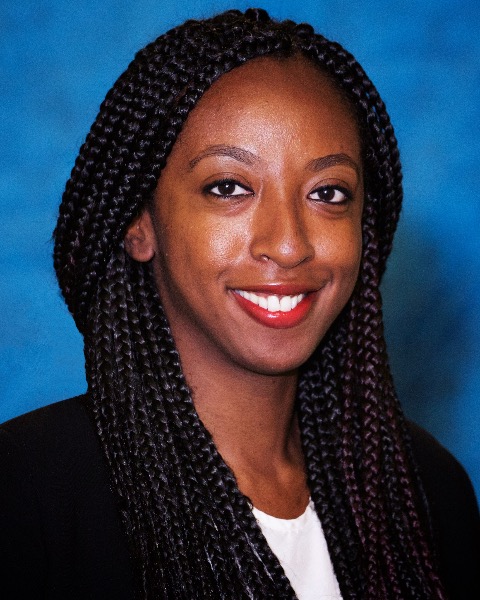Back
Poster, Podium & Video Sessions
Moderated Poster
MP30: Global Health/Humanitarian
MP30-13: Training and implementation of handheld ultrasound technology at Georgetown Public Hospital Corporation: a low-cost intervention to improve diagnostic evaluation in a resource-limited urology clinic
Saturday, May 14, 2022
1:00 PM – 2:15 PM
Location: Room 222
Michelle Bui, Adrian Fernandez, San Francisco , CA, Budheshwar Ramsukh, Georgetown, Guyana, Onika Noel*, Sacramento, CA, Chris Prashad, Georgetown, Guyana, David Bayne, San Francisco, CA

Onika DV. Noel, MD
University of California, Davis
Poster Presenter(s)
Introduction: Access to in-clinic radiology is a major health care disparity in low and middle-income countries. At Georgetown Public Hospital Corporation (GPHC) in Guyana, providers must assess urinary retention through catheterization instead of point of care ultrasound (POCUS). Thus, our objectives were to initiate a virtual POCUS training program at GPHC using the Butterfly iQ and to study its efficacy and stakeholder satisfaction.
Methods: This was a prospective cohort study of 20 medical students at GPHC participating in a POCUS training program taught by urologists from the University of California, San Francisco (UCSF) and GPHC. In the 20-day training phase, students learned POCUS basics through online written and video materials then took a written exam. They attended a live Zoom interactive lecture with UCSF and GPHC urologists and practiced using the Butterfly iQ before completing an Objective Structured Clinical Exam (OSCE) and satisfaction survey. In the 2-month clinical phase, they practiced POCUS on patients at GPHC and received feedback from UCSF urologists. One student dropped before the OSCE and another before the clinical phase, leaving 18 who completed this initial training intervention.
Results: In the training phase, the average written exam score was 2.95/5. All students received 100% on the OSCE exam, which tested their ability to prepare for a scan; identify the kidney, bladder, and prostate; and interpret findings. Satisfaction surveys were scored on a Likert scale (1 = not satisfied at all, 5 = very satisfied); the average was 3.9. Common feedback was there should be more emphasis on renal pathologies and opportunities for hands-on practice. In the clinical phase, the average written exam score was 3.5/5. Students improved on knowing which probe to use for transabdominal scanning (90% pre-test vs. 100% post-test), the criteria for hydronephrosis (40% vs. 93%), and when to use catheterization over bladder POCUS volume measurement (25% vs. 53%). They performed worse on identifying tissue appearance on POCUS (95% vs. 60%) and similarly on differentiating urine from peritoneal fluid (45%).
Conclusions: Preliminary results suggest that our virtual program is an effective alternative in teaching clinical skills. The program is satisfactory to participants. Overall, this pilot study demonstrates the efficacy of global collaborations using virtual didactics for POCUS skill instruction.
Source of Funding: UCSF Center for Health Equity in Surgery and Anesthesia Seed Grant, UCSF School of Medicine Inquiry Funding Office, Harold Varmus Global Health Scholars Fund
Methods: This was a prospective cohort study of 20 medical students at GPHC participating in a POCUS training program taught by urologists from the University of California, San Francisco (UCSF) and GPHC. In the 20-day training phase, students learned POCUS basics through online written and video materials then took a written exam. They attended a live Zoom interactive lecture with UCSF and GPHC urologists and practiced using the Butterfly iQ before completing an Objective Structured Clinical Exam (OSCE) and satisfaction survey. In the 2-month clinical phase, they practiced POCUS on patients at GPHC and received feedback from UCSF urologists. One student dropped before the OSCE and another before the clinical phase, leaving 18 who completed this initial training intervention.
Results: In the training phase, the average written exam score was 2.95/5. All students received 100% on the OSCE exam, which tested their ability to prepare for a scan; identify the kidney, bladder, and prostate; and interpret findings. Satisfaction surveys were scored on a Likert scale (1 = not satisfied at all, 5 = very satisfied); the average was 3.9. Common feedback was there should be more emphasis on renal pathologies and opportunities for hands-on practice. In the clinical phase, the average written exam score was 3.5/5. Students improved on knowing which probe to use for transabdominal scanning (90% pre-test vs. 100% post-test), the criteria for hydronephrosis (40% vs. 93%), and when to use catheterization over bladder POCUS volume measurement (25% vs. 53%). They performed worse on identifying tissue appearance on POCUS (95% vs. 60%) and similarly on differentiating urine from peritoneal fluid (45%).
Conclusions: Preliminary results suggest that our virtual program is an effective alternative in teaching clinical skills. The program is satisfactory to participants. Overall, this pilot study demonstrates the efficacy of global collaborations using virtual didactics for POCUS skill instruction.
Source of Funding: UCSF Center for Health Equity in Surgery and Anesthesia Seed Grant, UCSF School of Medicine Inquiry Funding Office, Harold Varmus Global Health Scholars Fund

.jpg)
.jpg)